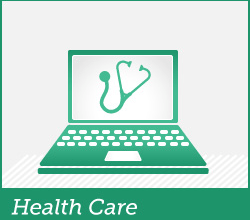 Effective October 1, 2014, all claims submitted to Medicare, Medicaid and private health insurers must use the new ICD-10 codes or the claims will n
Effective October 1, 2014, all claims submitted to Medicare, Medicaid and private health insurers must use the new ICD-10 codes or the claims will n
 Effective October 1, 2014, all claims submitted to Medicare, Medicaid and private health insurers must use the new ICD-10 codes or the claims will not be processed. This change has been looming on the horizon for months. Originally, implementation was scheduled to begin in 2013, but that date was postponed in order to give medical offices more time to prepare.
Effective October 1, 2014, all claims submitted to Medicare, Medicaid and private health insurers must use the new ICD-10 codes or the claims will not be processed. This change has been looming on the horizon for months. Originally, implementation was scheduled to begin in 2013, but that date was postponed in order to give medical offices more time to prepare.
The administrator of the Centers for Medicare and Medicaid Services (CMS) now says the 2014 date is firm and there will absolutely be no further delays in implementation of the new billing codes. If medical offices are not prepared by the implementation date, they will lose money. After that date, any claim submitted using ICD-9 codes will be rejected unpaid.
All medical practices will be affected by the change, but orthopedic sections of the code have changed more than any other section. There are measures orthopedic medical practices can take now in order to make a seamless transition to ICD-10 billing.
• Train staff and physicians on important elements of ICD-10.
ICD-10 replaces the 30 year-old ICD-9 code. The new edition replaces terminology that is outdated and adds approximately eight times as many codes. The codes are more specific and the change is expected to improve the quality of care and expedite the process for claims reimbursement.
The ICD-10 codes require more detailed description and documentation of the patient problems, diagnosis and treatment. Physicians and their staff need to start now becoming familiar with the documentation requirements and begin using them. For example, ICD-10 billing for a bone graft requires specific details about the procedure, including what deformities were corrected and what type of structural support was provided.
Billing staff is expected to have a greater knowledge of anatomy and physiology for ICD-10 billing than required for ICD-9. Staff should begin training now to improve and upgrade their knowledge in these areas.
• Create a list of the most common codes currently being used.
Orthopedic medical practices should create a list of the most common ICD-9 codes they currently use and compare them to the new ICD-10. Note where the changes are and begin using the new descriptions in the current practice. For example, under ICD-9 there is only one billing code for adhesive capsulitis of the shoulder. There are three applicable codes under ICD-10, each requiring more specific details.
• Work with EHR vendors and claims clearing houses.
Check with your EHR vendor to be sure the system will accommodate the new codes and what upgrades or modifications are planned for your current system. Find out what training the vendors have planned to make available for your staff.
Check with your claims clearing house or billing service to be sure they are prepared for ICD-10 billing to begin on October 1, 2014. Ask for the name of a contact person and for updates on the readiness status of the system. Find out if the service plans on any training, has established times for testing the service or has plans to increase their fees for their services.
• Work with billing revenue cycle companies.
CMS suggests that medical practices that do not already use a clearinghouse or billing revenue cycle service may want to utilize such services to assist in the billing transition.









